The Mystery of Mélange
By Terri Zach ‘21
Mélange (mā-ˈlänj) is a fun word to say. We can thank the French for that, it’s a derivation of the word ‘mêler,’ which means ‘to mix.’ Geologists have co-opted the word and a geologic mélange is a mixture of strong and weak rocks that were mixed together during deformation, typically on or near the seafloor, at the boundary of two colliding tectonic plates. Some researchers argue there’s an ancient geologic mélange (the Shores Mélange, named for Shores which was once a tiny village by the James River) in central Virginia that delineates a fossil tectonic plate boundary at the edge of old North America (geologists know it as Laurentia). Other researchers are less convinced that these curious rocks form the ancient suture along which plates were welded together ~450 million years ago during the Taconian orogeny.
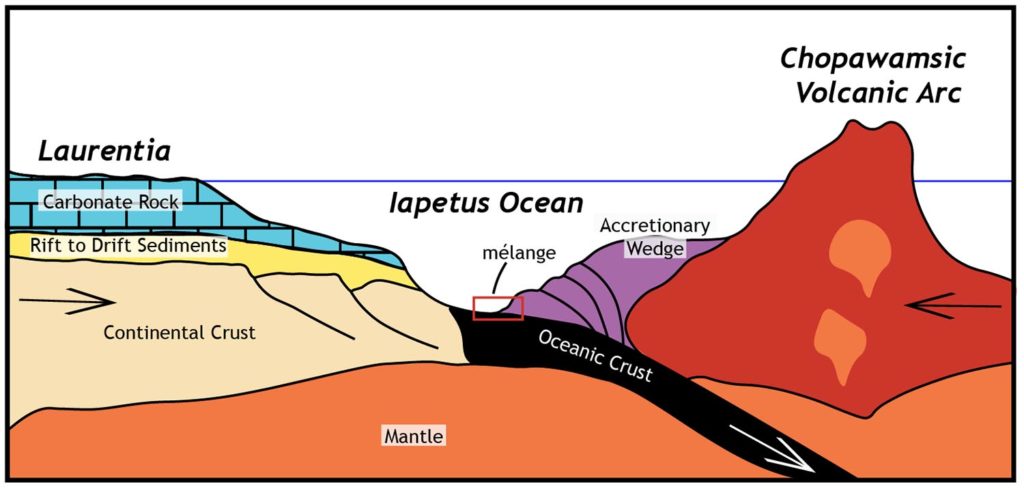
Figure 1: Simplified model of a subduction zone, accretionary prism, and the formation of the mélange during the late Ordovician Taconian orogeny. By the end of the Taconian orogeny the Chopawamsic Arc had accreted to Laurentia.
The goal of my research is to study the Shores Mélange by taking advantage of natural outcrops exposed in the James River. By mapping these rocks at a fine-scale I hope to be able to apply that understanding on a much grander scale to determine whether it’s an ancient suture or not. In doing so, we can provide new insight into Virginia’s geologic history over the course of millions of years.
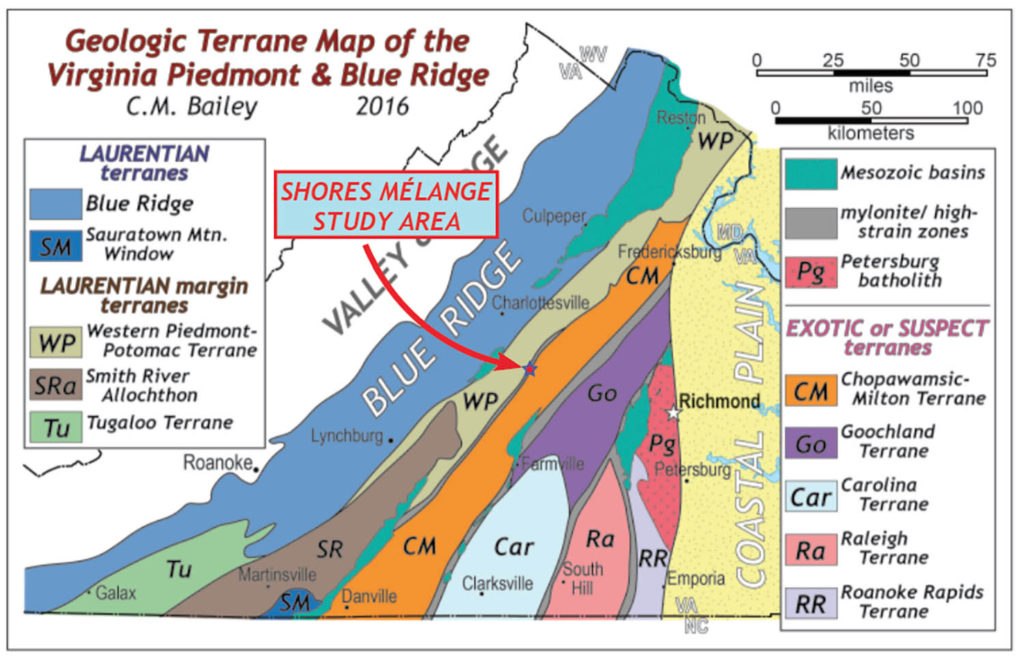
Figure 2: The location of my study area – the Shores Mélange at the Seven Islands, Virginia (noted by the star).
I started my socially distanced field research on June 12th in a canoe along the James River in the Seven Islands region (~85 km west of Richmond). We use the canoe to access the expansive and beautiful outcrops in the channel of the James River, at low water there are many rocks to be seen. At each outcrop, we note the rocks and their structural features such as foliation, lineation, fracture sets, and fault zones.
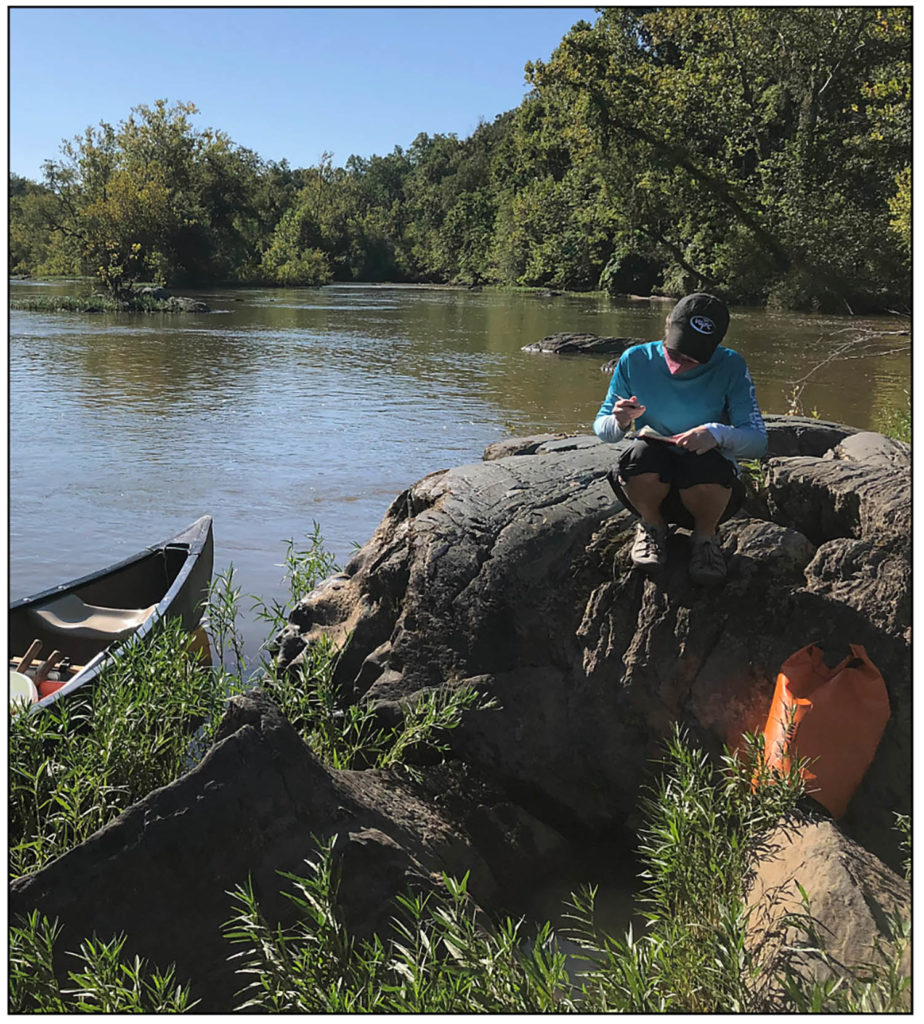
Figure 3: An action shot of me in the field, masked up, and taking notes of one of the many outcrops in the James River.
Some of the outcrops in the Seven Islands are spectacular and expose blocks (chunks) of metamorphosed basalt in well-foliated metasedimentary schist. The meta-basalt blocks may have been ripped off the seafloor and mixed into the mélange as the Chopawamsic Volcanic Arc approaches the Laurentian margin (Figure 1). Other outcrops reveal complex folds and boudins – all eye candy for the structural geologist.
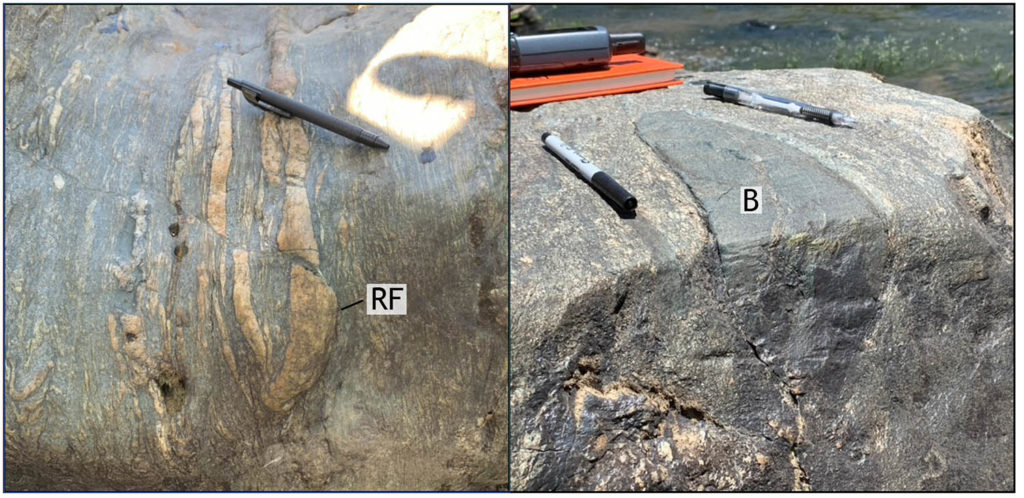
Figure 4: Left. An example of a faulted ‘rootless’ fold (RF). Right. A ‘block’ (B) of meta-basalt in a schist.
We’re attempting to map these rocks and structures at a far more detailed scale than earlier workers. To do this we’re using a drone (UAV) to take low-altitude aerial photos that serve as our base map.
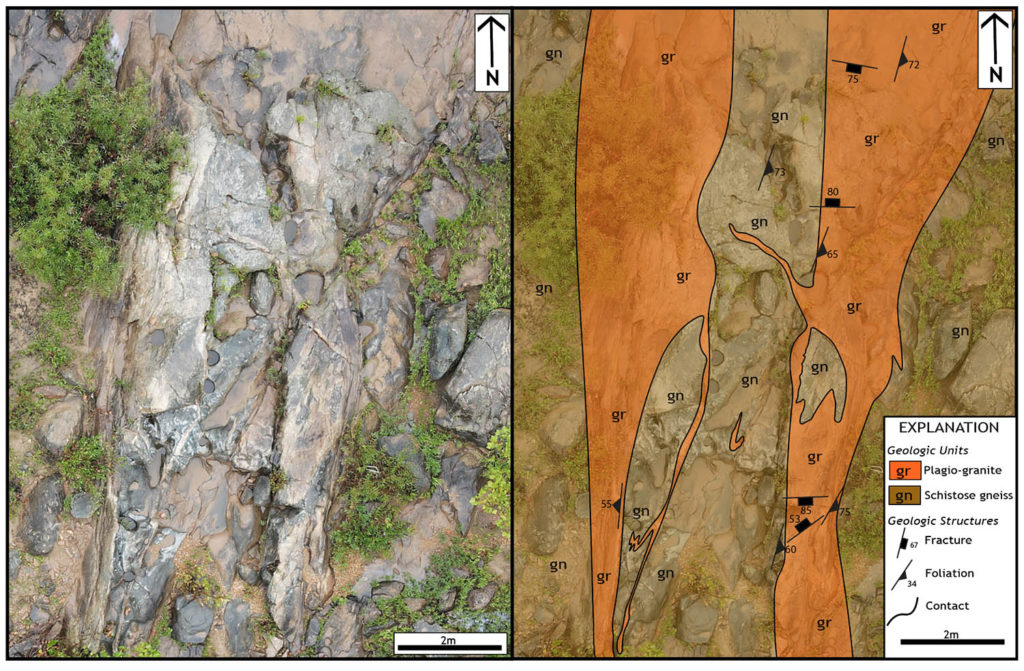
Figure 5: Left. UAV aerial photo of an outcrop in the Seven Islands region (photo by Pablo Yanez). Right. A geological map with my interpretation of the outcrop: the plagio-granite (orange) intrudes the older schistose gneiss (brown) and both rocks are folded and sheared.
After paddling across the Shores Mélange, the gradient of the James River slackens as it flows over meta-volcanic rocks of the Chopawamsic terrane. In these calm waters, it’s easy to reflect that the pandemic summer of 2020 does not allow for the typical summer research experience. However, there’s nothing typical about my academic journey so far. I am a non-traditional student that transferred to William & Mary from Thomas Nelson Community College in 2019. My community college geology professor, Lynsey LeMay (W&M Geology ’03), reinvigorated my interest in geosciences by inviting me to a Geological Society of America meeting in 2017. It is there that I learned about the vastly different areas of earth science research and heard talks by Professor Chuck Bailey and his research students. At the meeting, I realized that I wanted to attend William & Mary, study geology, and do tectonics research. It’s still hard for me to believe that I am here at W&M and doing cool original research. Nonetheless, I am incredibly grateful for all the support from my friends, family, mentors, and educators.
Comments are currently closed. Comments are closed on all posts older than one year, and for those in our archive.

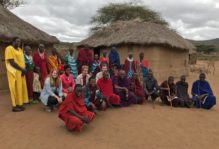
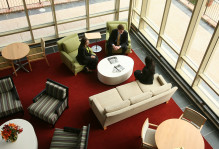
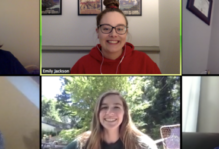
Super cool Terri!!! I enjoy your style of dialogue and explanation. It is informative without being difficult to decipher for those of us not familiar with the field. I am proud to know and work with such a determined and interesting person !
That is really cool Terri! I learned a lot and see your really have a strong passion for what you do!
This blog post is really great! I agree with Jess about the language used – There’s a lot of info that’s broken down for laymen to comprehend easily. Keep it up!
Your passion for your research and field of interest is evident in your writing. This was an excellent read that didn’t speak over me, but spoke to me.
You did a wonderful job on this piece, Terri! It was very easy to follow and the figures provided lots of insight into your work.
I really enjoyed reading this Terri! Excited to read more of your blogs too, your enthusiasm is inspiring!
Love this piece. I could follow and understand it without any prior knowledge of the subject. It is interesting to know the differences in the rocks on the James River and left me with a desire to take a trip to the Seven Islands. WELL DONE!
Interesting and informal look into the research and day to day learning of a Geo student
Such a great topic! Loved reading this piece. Keep up the great work!
This is a very well written post. I really enjoy both the passion and hard work that is going into your research. I can also tell you put a lot of work and effort into your figures, which were helpful in visualizing your study site. Your enthusiasm is an inspiration to us all. Keep up the work!
Good job Terri — your figures look wonderful!